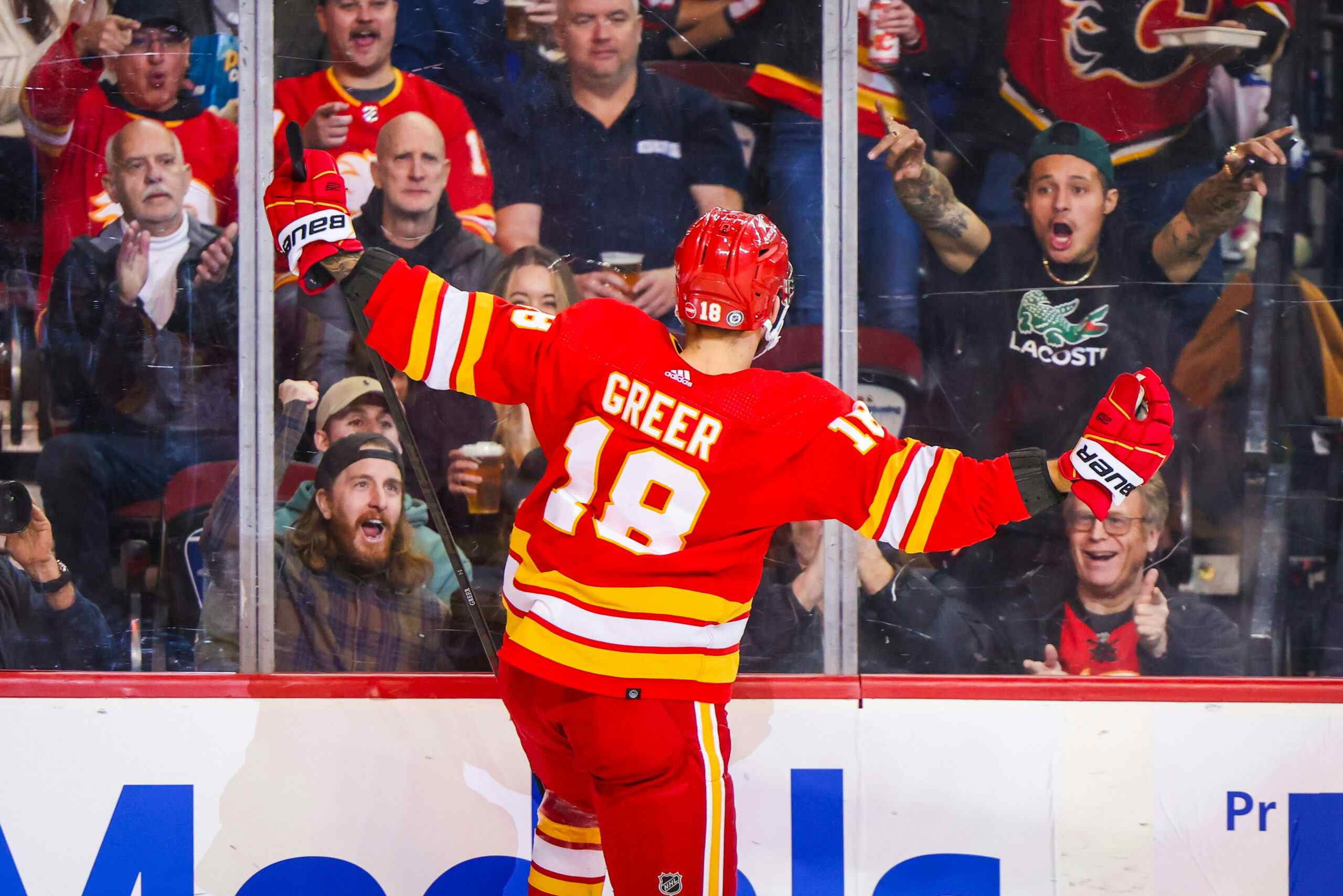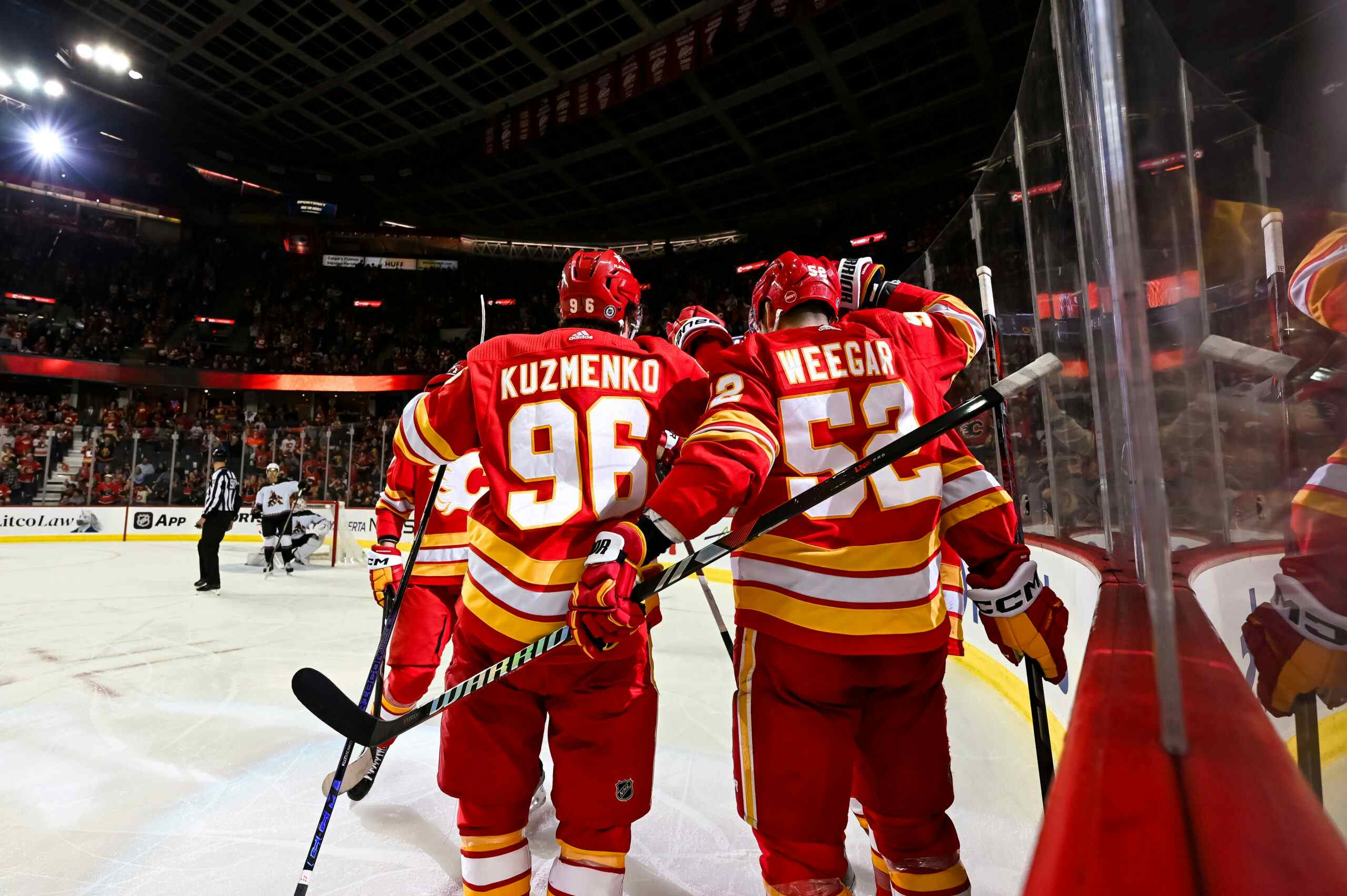Report: the Flames have a $630k cap overage from last season
By Ryan Pike
7 years agoThe 2015-16 season was a big disappointment for the Calgary Flames. Their goaltending was lousy. T.J. Brodie missed a chunk of the season. Dennis Wideman decked a linesman. Jiri Hudler wasn’t very good. The goaltending was lousy. (Did I mention the goaltending?)
The pain of 2015-16 will continue to be felt in 2016-17, folks: because of performance bonuses pushing them over the cap last season, the Flames will face a salary cap penalty of $630,500 for this season, according to a report from Cap Friendly.
And the reported reason for the cap penalty is rather surprising.
LAST YEAR’S CAP
The salary cap last year was $71.4 million. Ignoring performance bonuses, the Flames spent approximately $69.033 million against the cap on player salaries – including $5.763 million on healthy scratches and bodies buried in the American Hockey League. That left the Flames with roughly $2.366 million in cap room for bonuses… before the reported $733,333 hit from the Shane O’Brien buyout, which pushed the room for bonuses to just $1.633 million. Under the terms of the CBA a team is allowed to go over the cap by the value of their performance bonuses (up to a maximum of 7.5% over the cap), but anything they go over is taken off of the next year’s cap.
Five fairly prominent youngsters had entry-level deals that included performance bonuses: Sam Bennett ($2.3 million), Sean Monahan ($850,000), Johnny Gaudreau ($1.85 million), Hunter Shinkaruk ($212,000) and Jakub Nakladal ($107,000). Markus Granlund, Brett Kulak, Oliver Kylington and Garnet Hathaway also spent time with the Flames and had performance bonuses on their deals. All told, the Flames had roughly $5.1 million in potential bonuses on their roster.
Here’s how the CBA defines Schedule A bonuses (for forwards, which will be the primary factor here):

Based on this, presumably Gaudreau and Monahan hit all of theirs (and likely maxed out their $850,000 each, which is enough to bump the Flames into cap overage territory. Add in potential ice time bonuses for Bennett and games played bonuses for everybody else, and it seems fairly probable that seven players hit some performance bonuses.
Schedule B bonuses are individually negotiated and tied to individual awards, but given Gaudreau was top 10 in both points and points-per-game, it seems likely that his performance last season is the major factor in the cap overage situation. The games played bonuses for the remaining players were likely fairly minor in comparison.
SHANE O’BRIEN
Acquired from the Colorado Avalanche in a “bad deals for bad deals” deal, O’Brien had one rough year with the Flames and then was bought out on June 30, 2014 after clearing waivers that day.
Given that the compliance buyout window AND the regular buyout window were one and the same in 2014 (e.g., it’s not like the Flames could’ve missed a deadline and had the compliance buyout become a regular buyout), we’re looking into what the heck happened there and have reached out to the league for clarification.
THIS YEAR’S CAP
The Flames had a projected $8.5 million left to sign Gaudreau (and a 14th forward) before the cap penalty. Now, the Flames have roughly $7.87 million left to sign Gaudreau. And to pay for a 14th forward. And to deal with any short-term injuries (with call-ups) that wouldn’t qualify for cap relief under the long-term injury reserve system.
Between the millions of dollars tied up in high-cost depth players like Brandon Bollig, Deryk Engelland, Dennis Wideman and Ladislav Smid, along with the buyout to Mason Raymond and the cap penalty, the Flames have a lot of dead money on their cap and not a lot of flexibility for the coming season. Presumably this means the team doesn’t carry many extra bodies during the season, which would leave them really vulnerable to injuries and hurt their line-up flexibility.
Recent articles from Ryan Pike





